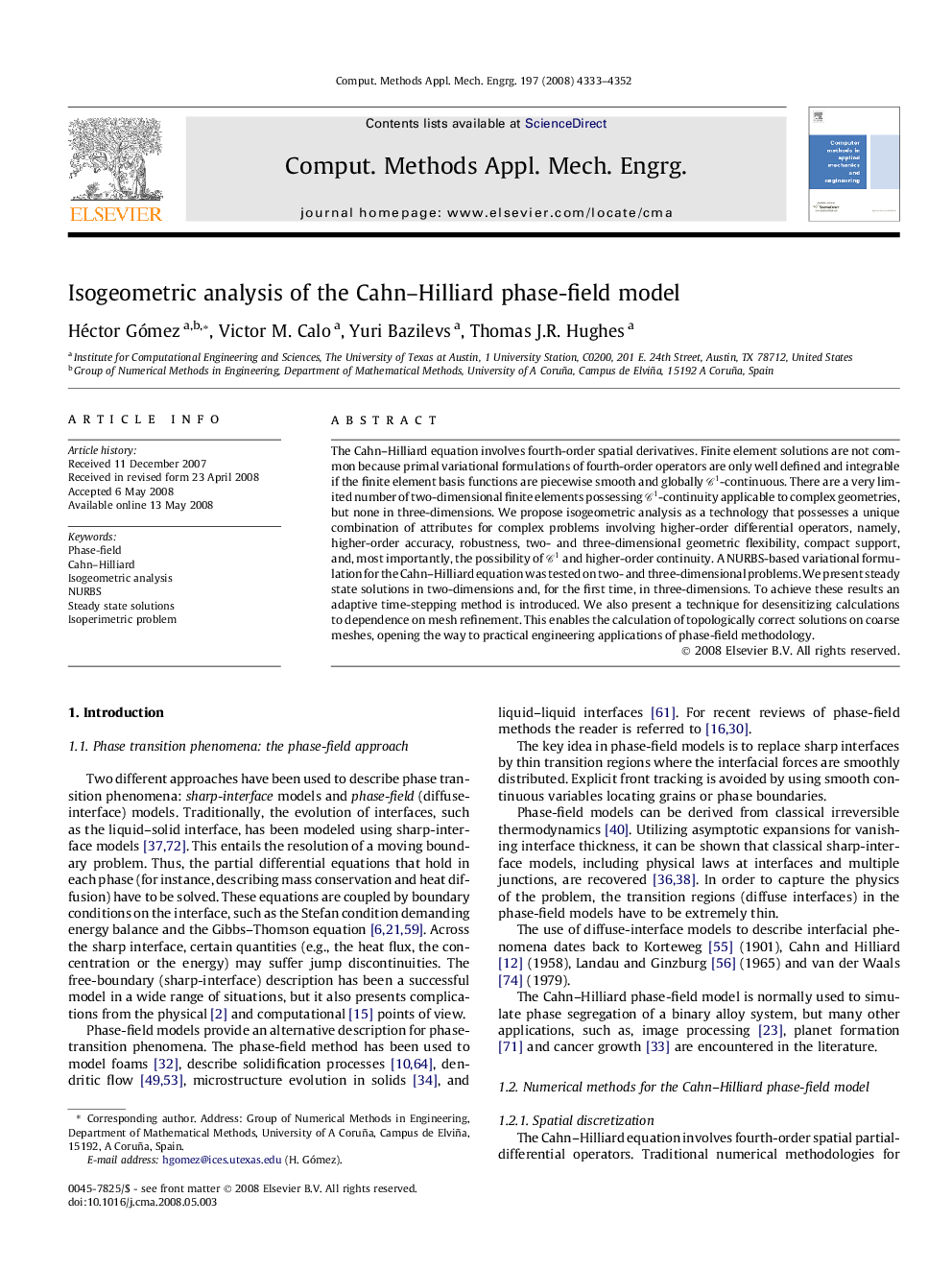| Article ID | Journal | Published Year | Pages | File Type |
|---|---|---|---|---|
| 499637 | Computer Methods in Applied Mechanics and Engineering | 2008 | 20 Pages |
The Cahn–Hilliard equation involves fourth-order spatial derivatives. Finite element solutions are not common because primal variational formulations of fourth-order operators are only well defined and integrable if the finite element basis functions are piecewise smooth and globally C1C1-continuous. There are a very limited number of two-dimensional finite elements possessing C1C1-continuity applicable to complex geometries, but none in three-dimensions. We propose isogeometric analysis as a technology that possesses a unique combination of attributes for complex problems involving higher-order differential operators, namely, higher-order accuracy, robustness, two- and three-dimensional geometric flexibility, compact support, and, most importantly, the possibility of C1C1 and higher-order continuity. A NURBS-based variational formulation for the Cahn–Hilliard equation was tested on two- and three-dimensional problems. We present steady state solutions in two-dimensions and, for the first time, in three-dimensions. To achieve these results an adaptive time-stepping method is introduced. We also present a technique for desensitizing calculations to dependence on mesh refinement. This enables the calculation of topologically correct solutions on coarse meshes, opening the way to practical engineering applications of phase-field methodology.
